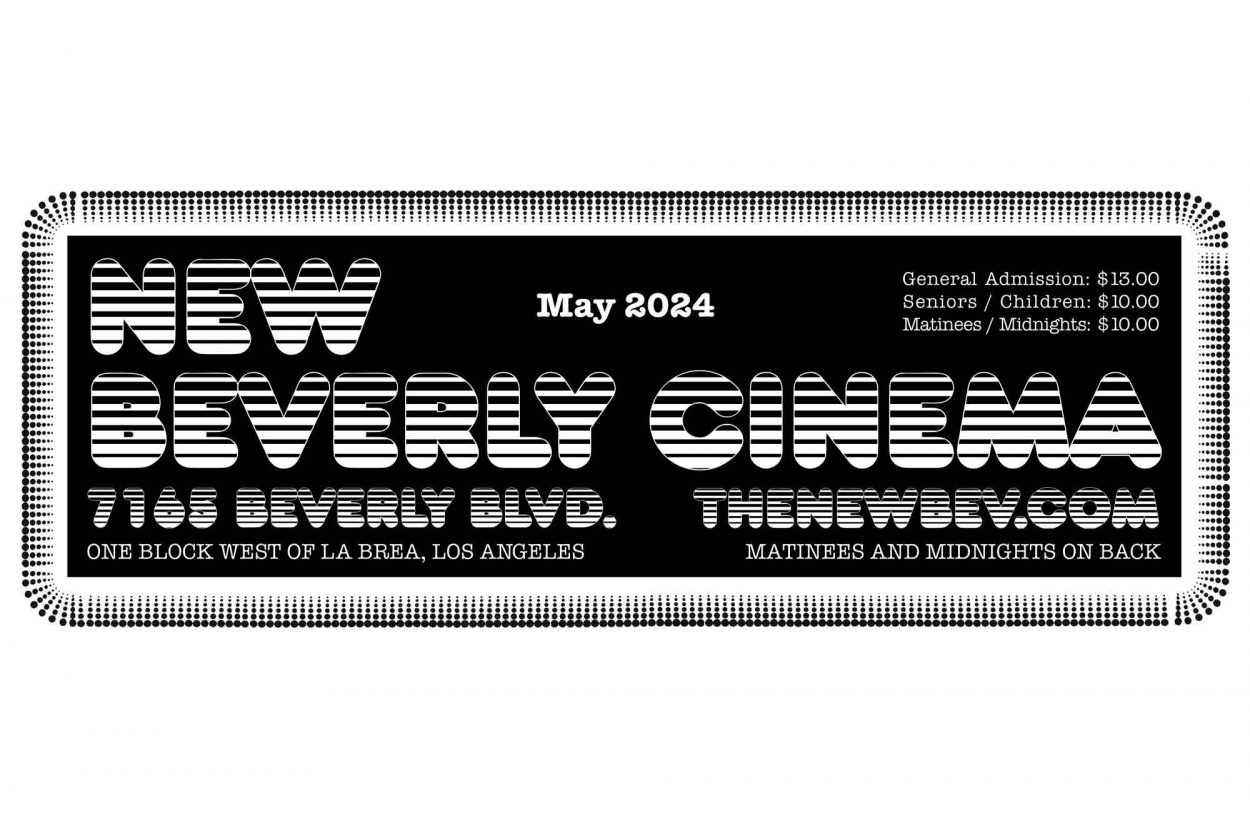I was 4 years old when I first saw E.T. It was during its initial run at the Cinerama Dome in Hollywood, and like many kids, I didn’t finish the film. But it wasn’t the guys in the white suits that freaked me out. It was when E.T. opened the umbrella and Elliot dropped the milk. E.T.’s scream was weird and unfamiliar and that quick cut to the carton unceremoniously falling to the ground terrified me. My uncle took me out crying hysterically. Years later, I got an email from my uncle telling me he had taken my young cousin to see the theatrical re-release and he had finally gotten a chance to see how E.T. ended, no thanks to me! Harrumph!
When the film was first released on video, my parents must have rented it. And like most children of an age, I must have watched it multiple times. The way that I know or can trace this is the visceral attachment that I have to the movie. When I watch E.T now, it registers on such a level that it is one of the only films I have ever found difficult to separate myself from in order to look at it. This film, Steven Spielberg’s E.T. (1982), is not only a part of my childhood, it is my childhood.
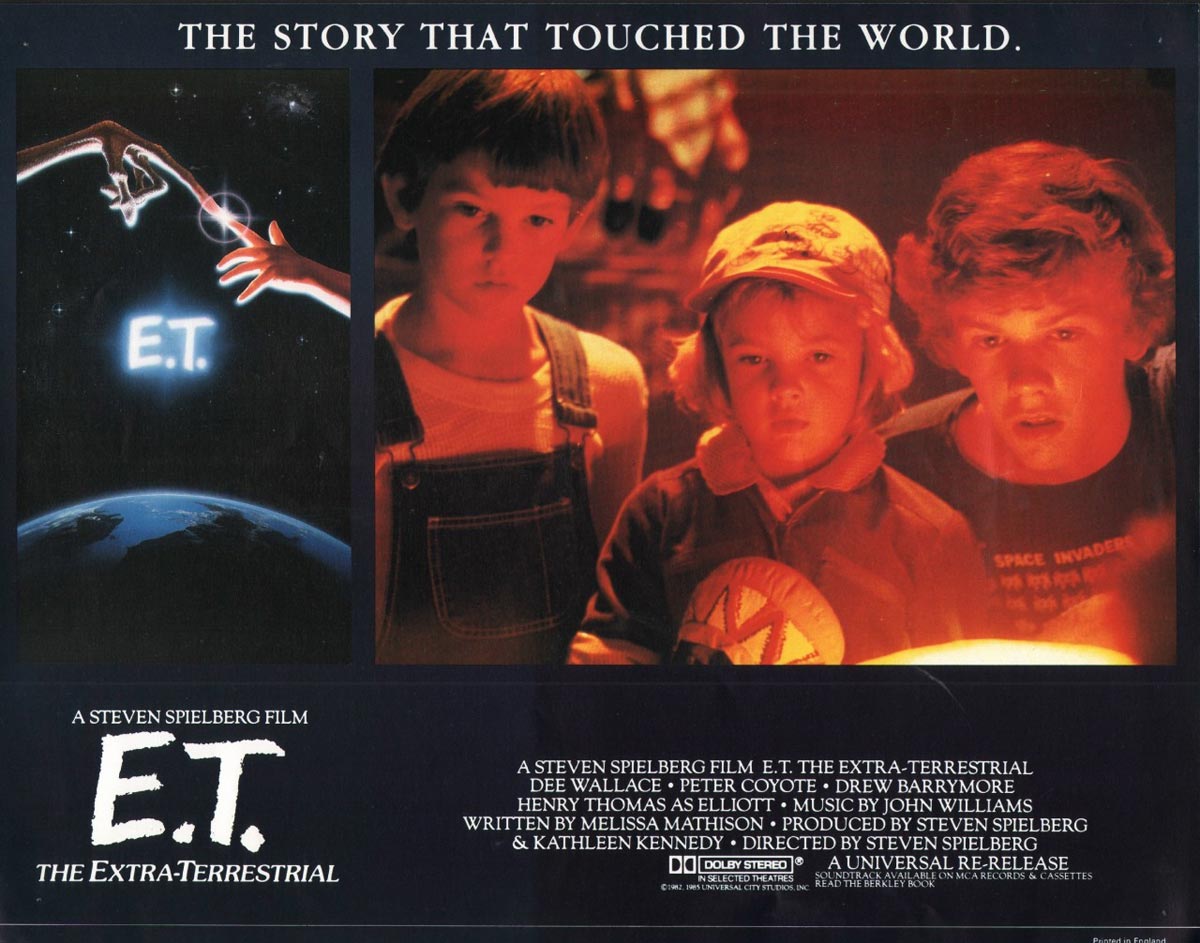
E.T. is 35 years old, and there is no question that it’s a classic. Not only is it one of the top ten highest grossing films in history, but E.T. was also a complete game changer as far as how family entertainment was realized and consumed. Producer Kathleen Kennedy remarked that E.T. really broke the mold when it came to what had been being offered to kids. In an interview I did with her a few years ago, she said, “[E.T. was made] at a time when family films in general were really designated primarily to be movies made for children and only for children, so the idea that movies crossed over and included the broad spectrum of entertainment, that was a relatively new phenomenon. […] I remember sitting in marketing at the time, we were actually having a hard time booking enough theaters, Steven actually sent me in to say, ‘I’d like it to be in 1,100 theaters,’ which is a lot of theaters today, and they said no. We eventually ended up getting there when the film started to preview and it was clear that it was hitting a really wide audience, but initially it was 7-800 theaters. That was going to be the run.”
They certainly did end up getting there. E.T. had its world premiere at the very spot where I would have my E.T. trauma a few months later, the majestic Cinerama Dome. The funds from that show were slated to go to the new Cinema-TV Center at USC. As Kennedy had noted, the original booking for the film was in the hundreds. But then a preview screening in Houston, Texas tested through the roof and Universal didn’t know what hit ‘em. They wanted to go big: 1600 screens. They approached the young director with this number. Spielberg wasn’t stoked on such a wide opening and told them: let’s do 1100.
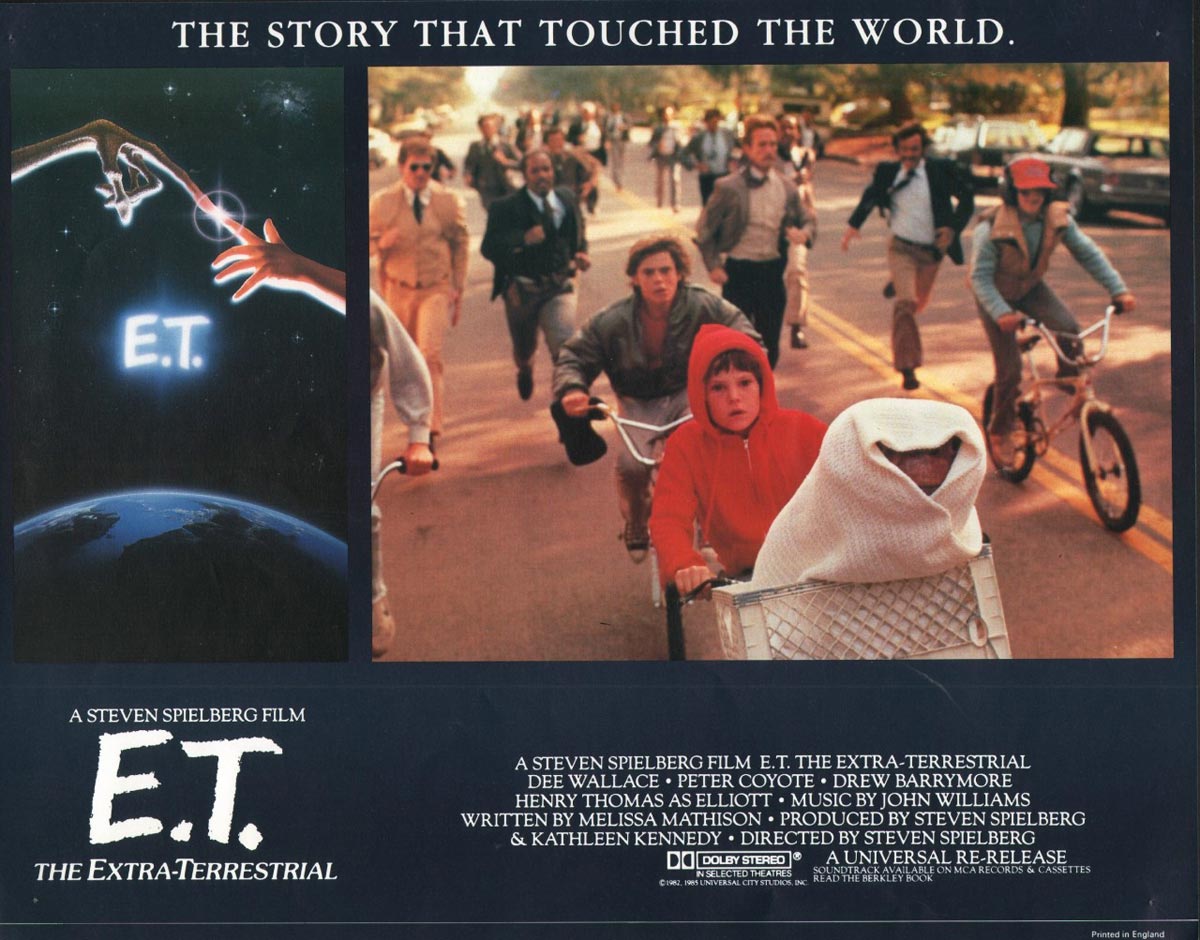
What happened next was beyond expectations and beyond theatrical numbers. E.T. became more than a movie, it became a cultural experience and an event. In the same way that Star Wars had hit America, E.T. hit the scene, causing people to line up for hours to get tickets, breaking box office records (becoming the biggest opening weekend for Universal). And speaking of Lucas, poor guy- after a few months, the domestic rental earnings of E.T. had outranked his “little sci-fi movie.”
The film itself is beautiful and sad (I always cry during E.T., and I am 100% cool with that). On a surface level, E.T is about an extraterrestrial creature having an exchange with a young boy and his family on earth. In all honesty, the narrative of this motion picture is much deeper than the plotline would admit. E.T. is structured around accepting yourself and your weirdo nature; being cool with being an outsider and coming to terms with having a family that loves you and each other but may not be “perfect” (whatever that means). It’s about realizing that sometimes shit sucks and life is going to hurt but it’s worth all of the skinned knees for the magical bicycle rides and Halloween adventures.
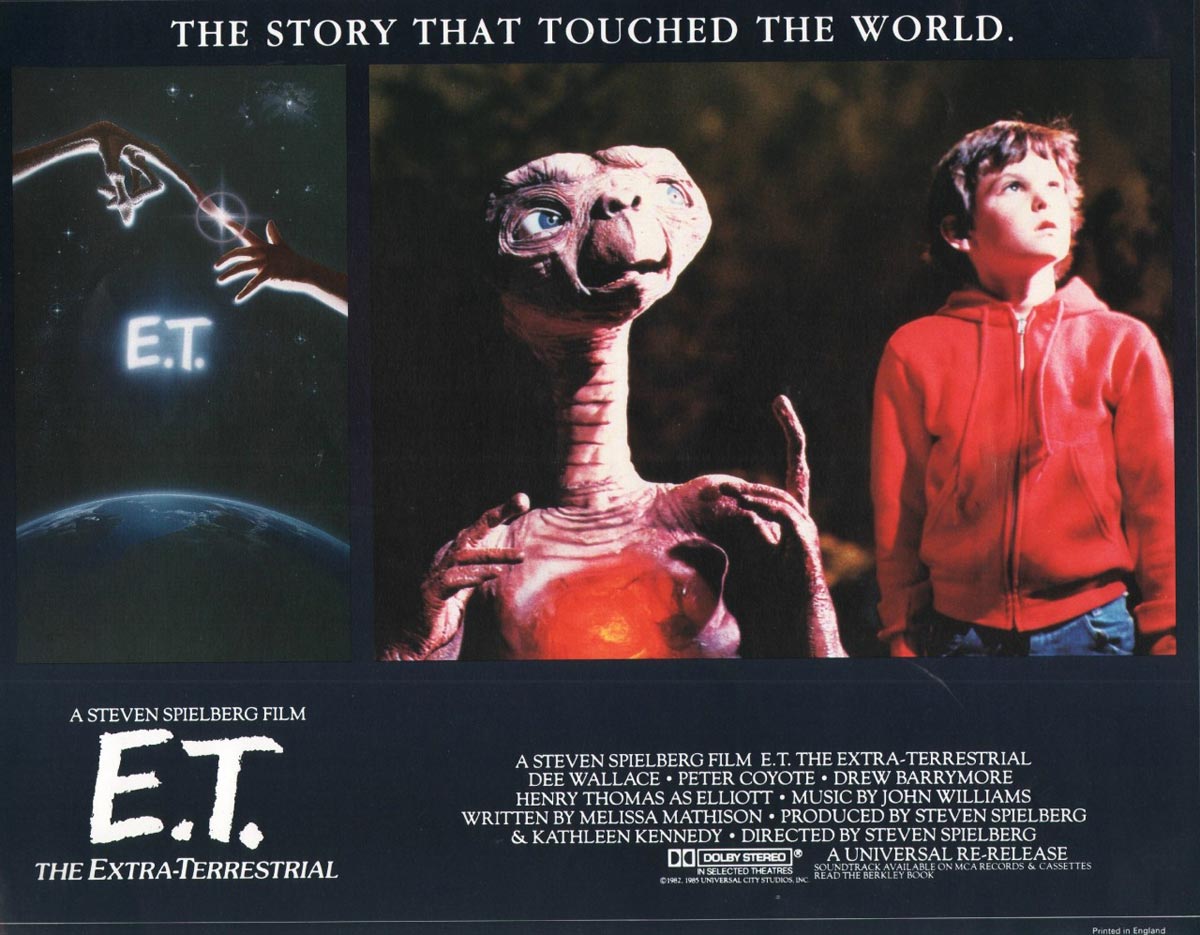
One of the more incredible features of E.T. is its dependence on women as cast and crew to make the film happen, both on-screen and off. In 2017, while marginalized groups (women, POC, queer folx) are still fighting tooth and nail for a seat at the filmmaking table, it is a minor miracle that this film’s production staff was so gynocentric. Aside from producer Kathleen Kennedy, editor Carol Littleton, screenwriter and co-producer Melissa Mathison, first AD Katy Emde, negative cutter Donah Bassett, and set decorator Jackie Carr are all women. Dee Wallace (Mary) and Drew Barrymore (Gertie), playing mother and daughter, were the primary women in the cast.
It was Kathleen Kennedy who originally suggested Melissa Mathison as screenwriter for E.T. She had seen Mathison’s recent film, The Black Stallion (Carroll Ballard, 1979), and made a solid assessment that she would be the perfect woman for the job. Although Mathison initially rejected the offer, she eventually acquiesced. According to several sources, few drafts of E.T. were written and even less changes were made in between each draft before the final shooting script was confirmed. This film had all the right puzzle pieces as far as people were concerned. As a historical E.T. fact: previous to engaging Mathison for the task, Spielberg had designs on a much darker and gorier outer space film and had asked John Sayles to write a script for him called Night Skies. The film was never made but if you ever get a chance to see Sayles’ wonderful work Brother From Another Planet (1984), the writer-director borrows liberally from his Spielberg script.
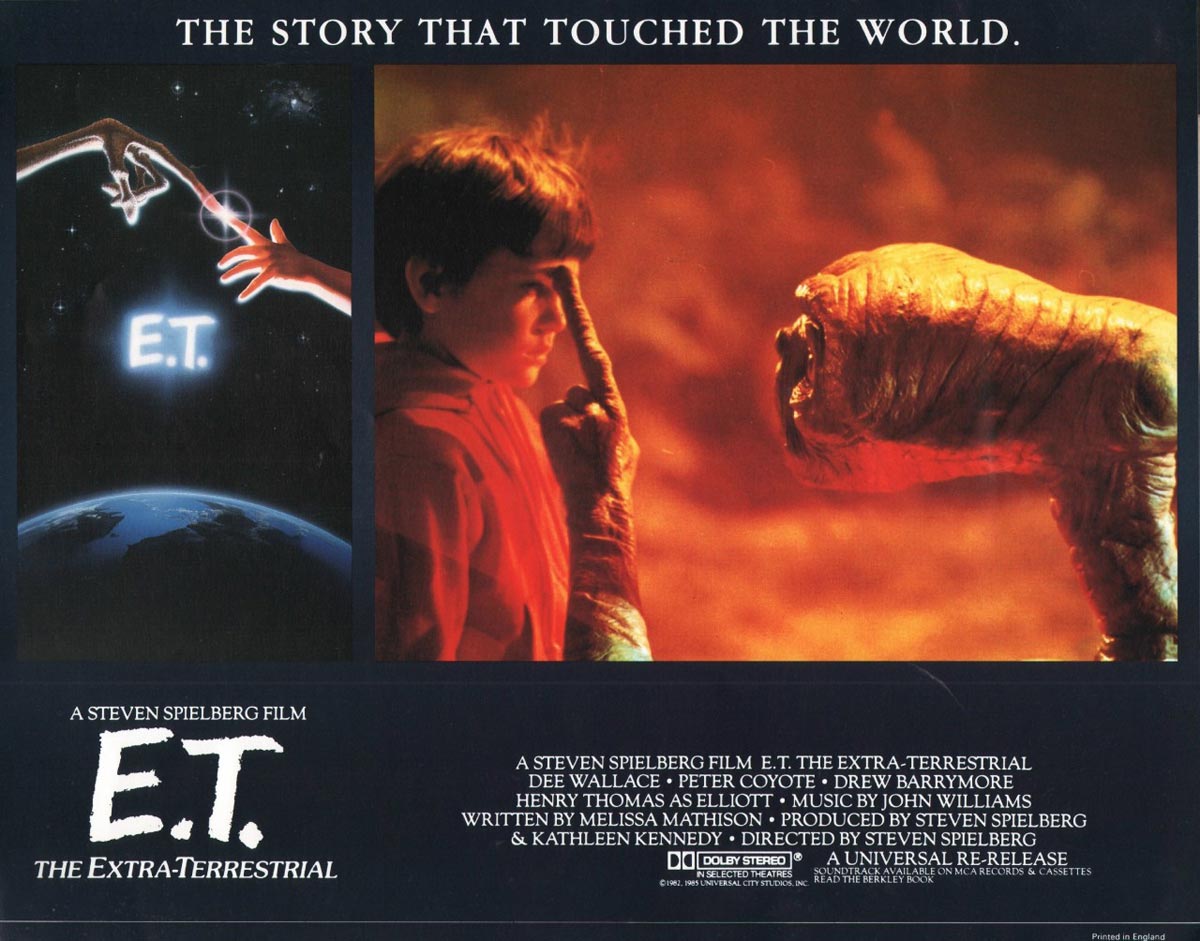
Critics have discussed Spielberg and his work in terms of broken families and dysfunction, noting problematic or absent father figures, and the amount that Spielberg’s own personal life bleeds into his fictional work. Spielberg himself has stated on more than one occasion that E.T. is unequivocally one of his most personal films. He speaks mostly in terms of the depiction of Elliot and the young male experience and being the child of divorce. Revisiting the film as I have on multiple occasions as an adult woman, E.T. has always stood out to me because of its incredible depiction of a single mother. While we may remember “E.T. phone home” and Drew Barrymore’s pigtails, it is Dee Wallace’s performance as Mary that is wildly underappreciated.
I was lucky enough to get to spend some time with Wallace a few years ago and I asked her if she would talk a little about what it was like playing a single mother in 1981-82 and how she developed the character of Mary. “It was easy for me,” she said, “Even though my dad was there, he was a drunk, who ended up committing suicide. So pretty much I was raised by a single strong mother. Very much like Mary – always kept it together, loved her kids beyond what love could be, and [brought them] through all kinds of travesties.” Wallace went on to say that the energy on the set was really supportive and very maternal and positive. “Even Steven!” she laughed.
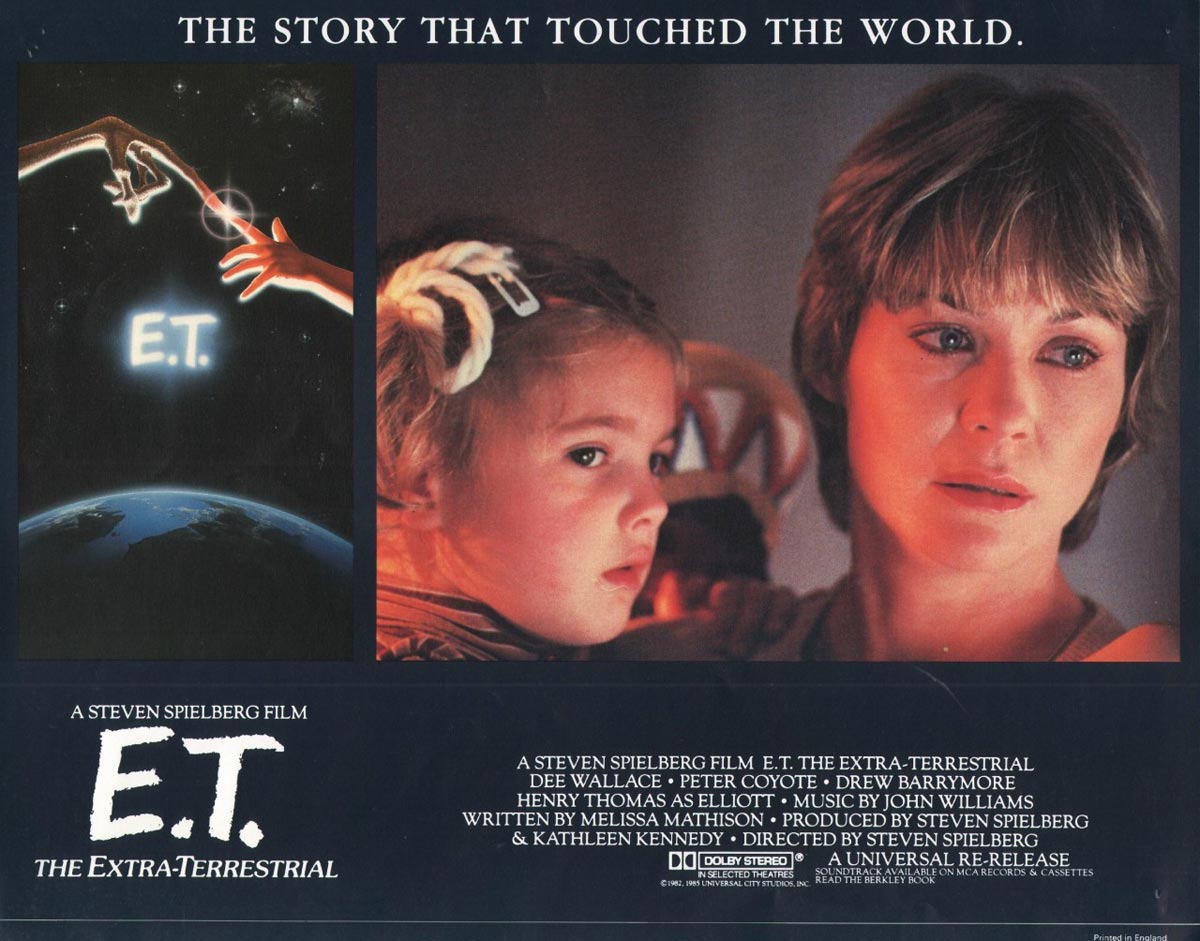
OK, final thing: let’s enjoy some of the advertising. We can’t talk about E.T. without touching on it at least a bit. And not just because the commercials were awesome. But… partially because they were. E.T. was revolutionary in the way it burst upon the marketing landscape. It surprised many people but no one more than the people involved! As Kathleen Kennedy remembers, “Now you think about these movies having huge merchandising campaigns… no one was doing that with movies…I’m sitting at my desk one day, and I get this call from the F.B.I., and I’m pretty shocked, right? And they said, ‘Look, we got two 747s at Newark full of pirated E.T. dolls, what do you wanna do with ‘em?’ So from that point on, I then looked at a call sheet that had something like 250 calls from companies wanting to put together some kind of merchandising campaign. And really, the reason we ended up doing any merchandising at all – because we had no idea about the business – was to try to put trademarks in place so that we could stop piracy, because piracy was just exploding with the success of the movie.”
E.T. was popular enough in the film world that it acquired the sponsorship of big corporations like Reese’s Pieces, McDonald’s, Pepsi and more. The amount of E.T.-based ephemera that exists (or existed) out in the world after the film’s 1982 release is simply mind-boggling. So here- let’s mind boggle together through the E.T. ads and I hope to see all of you, Reese’s Pieces in hand, on August 19th and 20th at the New Beverly Cinema for some outer space action that’s out of this world!
Atari!
I really want all of these. Don’t you?
A different one each week!
The one who helps E.T. the most wins!
I MISS THIS RIDE :’(
Best. Commercial. <3
E.T.- for your health!

